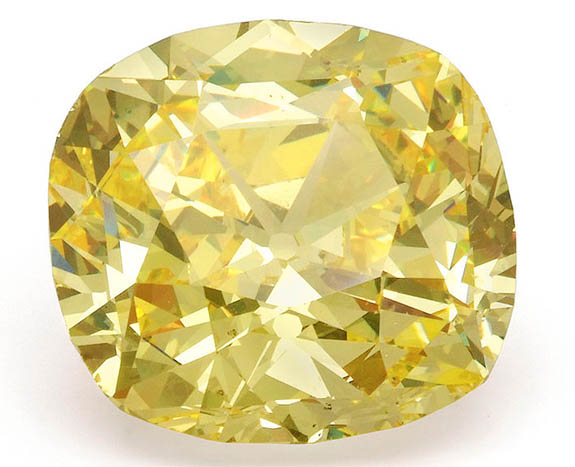Imperfect diamonds could hold the key to the future of long-term, high-density data storage, according to a team of physicists from The City College of New York. Researchers claim that a diamond half as long as a grain of rice and thinner than a sheet of paper can hold 100 times more information than a DVD. In the future, a single diamond might have the storage capacity of one million DVDs.
The team’s findings were published recently in the journal Science Advances.
Highly coveted fancy yellow diamonds owe their color to the faint presence of nitrogen atoms in the diamond’s carbon structure. Interestingly, the same chemical imperfections that cause the diamond to be yellow, provide atomic-sized voids for the storage of data. Scientists call these imperfections “nitrogen vacancy centers.”
“We are the first group to demonstrate the possibility of using diamond as a platform for the superdense memory storage,” lead author Siddharth Dhomkar, a physicist at The City College of New York, told Live Science.
What’s more, diamonds hold an advantage over traditional storage media because they are three dimensional and not susceptible to wear and tear. Data stored in a diamond could truly last forever.
“A DVD is like a 2-D puzzle, and this diamond technique is like a 3-D model,” research participant and graduate student Jacob Henshaw told The New York Times. “Unlike the DVD, which has only one surface, a diamond can store data in multiple layers, like a whole stack of DVDs.”
Researchers were able to use lasers to encode data into a diamond’s imperfections. They added electrons by shining a green laser and deleted electrons by shining a red laser. The computer reads the presence or absence of electrons much like a traditional computer reads 0s and 1s.
To illustrate the concept, researchers encoded images of Nobel Prize-winning physicists Albert Einstein and Erwin Schrödinger on a diamond by adding and removing electrons with green and red lasers.
If this breakthrough technology takes off, diamonds coveted for data storage will be very different from the ones seen in jewelers’ showcases. For data purposes, the more flaws, the better.
“The bigger the diamond, the more defects, the more places to put information,” Henshaw told The Times.
Credits: Yellow diamond by MJT Symbolic (Own work) CC BY-SA 4.0, via Wikimedia Commons. Laser-encoded diamond by Carlos A. Meriles and Siddharth Dhomkar.


